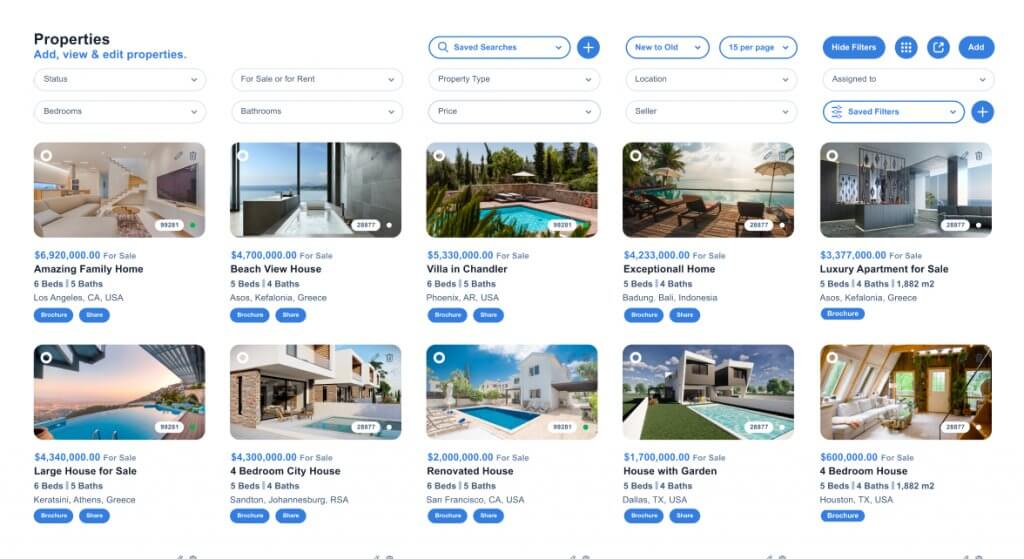In today’s digitally-driven world, real estate social media analytics has become an indispensable tool for professionals. It offers a dynamic platform to showcase listings, engage with potential clients, and build a brand presence. However, merely having a social media presence is not enough; understanding the impact of your efforts is crucial. Social media analytics are key to improving ROI, making informed business decisions. That’s where social media analytics comes into play. In this blog post, we’ll dive into the world of real estate social media analytics, exploring how to track key performance metrics and leverage the insights gained to refine your real estate marketing strategies.
Table of Contents:
- Understanding the Importance of Social Media Analytics
- Key Metrics to Track
- Choosing the Right Tools
- Conclusion
1. Understanding the Importance of Social Media Analytics
Before we delve into the nitty-gritty of social media analytics, let’s first understand why it’s so vital for real estate professionals.
- Assessing Engagement
Social media analytics allows you to gauge how engaging your content is. Metrics like likes, comments, shares, and click-through rates (CTR) provide insights into what resonates with your audience. By understanding which posts generate the most engagement, you can tailor your content to better suit your followers’ interests.
- Tracking Growth With Real Estate Social Media Analytics
Keeping tabs on your follower count is just the tip of the iceberg. Social media analytics can reveal the rate at which your audience is growing. A steady increase in followers indicates that your content and engagement strategies are working, while a decline may necessitate a change in approach.
- Measuring Reach and Impressions
These metrics help you understand how many people are seeing your posts. Reach tells you the total number of unique users who have seen your content, while impressions represent the total number of times your content has been displayed. Analyzing these metrics can provide insights into your content’s visibility.
- Monitoring Click-Through Rates (CTR)
CTR measures the effectiveness of your call-to-action (CTA) in driving traffic to your website or landing pages. This is particularly important for real estate professionals as it helps assess the success of property listings and lead generation campaigns.
2. Key Metrics to Track
Now that we’ve established the importance of social media analytics let’s look at some key metrics you should be tracking:
- Follower Growth Rate
Calculate the percentage increase in your followers over a specific period. A steady, upward trend is indicative of effective social media strategies.
- Engagement Rate
Determine the average engagement rate per post by dividing the total number of likes, comments, and shares by the number of followers. A higher engagement rate signifies more compelling content.
- Click-Through Rate (CTR)
Track the number of clicks on your CTA links divided by the number of impressions or reach. A high CTR indicates that your audience is taking action based on your content.
- Conversion Rate
If you’re using social media for lead generation, measure the percentage of users who take a desired action, such as filling out a contact form or requesting more information.
3. Choosing the Right Tools
To effectively utilize social media analytics, you’ll need the right tools. Popular platforms like Facebook, Instagram, and Twitter offer built-in analytics dashboards. However, for more comprehensive insights, consider third-party analytics tools like Hootsuite, Sprout Social, or Google Analytics.
Refining Your Real Estate Marketing Strategies
Once you have access to social media analytics, it’s time to put the data to work. Here are some strategies to refine your real estate marketing efforts:
- Content Optimization
Identify the types of content that resonate most with your audience and focus on creating more of it. Use analytics to refine your posting schedule and determine the best times to reach your followers.
- Audience Segmentation
Leverage demographic data to tailor your content to different segments of your audience. This can be especially useful when marketing various property types to distinct buyer personas.
- A/B Testing
Experiment with different CTAs, headlines, and visuals to determine what generates the best results. A/B testing can help optimize your social media ad campaigns.
4. Conclusion
In the competitive world of real estate marketing, data-driven decisions are key to success. Social media analytics provides the insights you need to fine-tune your strategies, enhance engagement, and drive meaningful results. By regularly tracking and analyzing key metrics, you can stay ahead of the curve and ensure your real estate marketing efforts are both effective and efficient. So, dive into the world of social media analytics, and watch your real estate marketing success soar.




